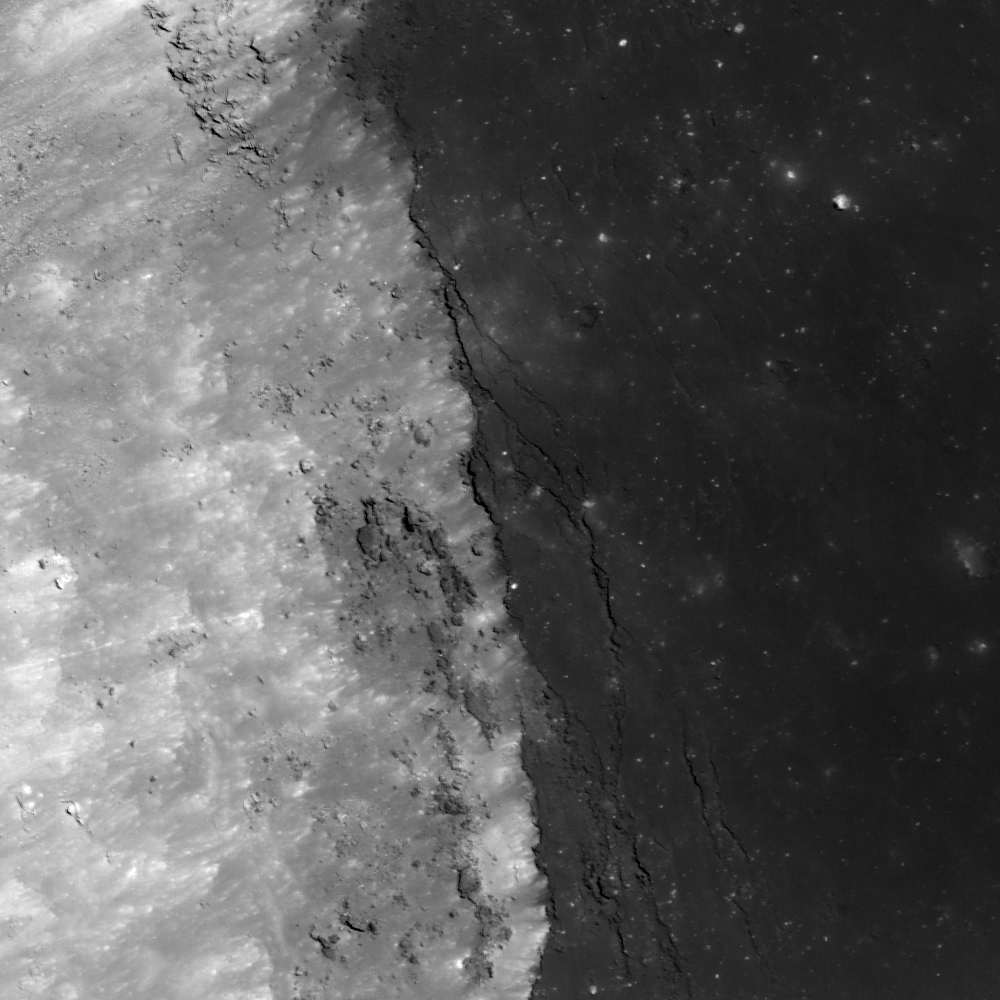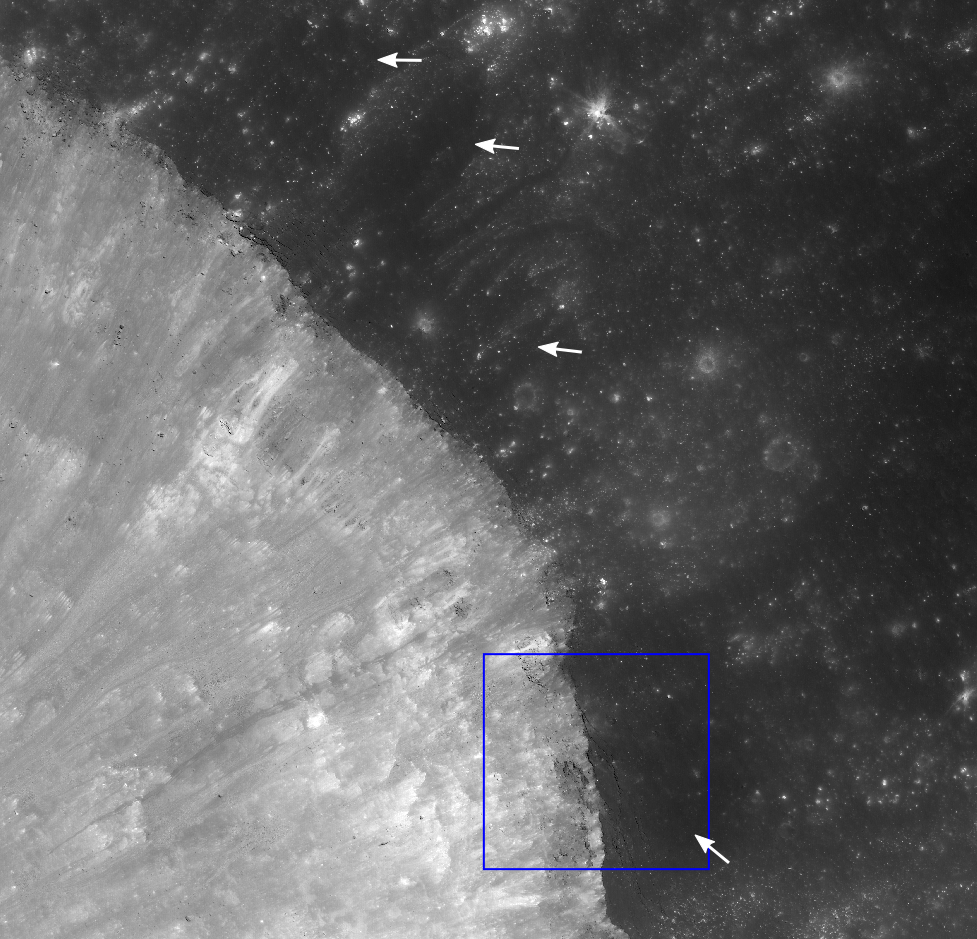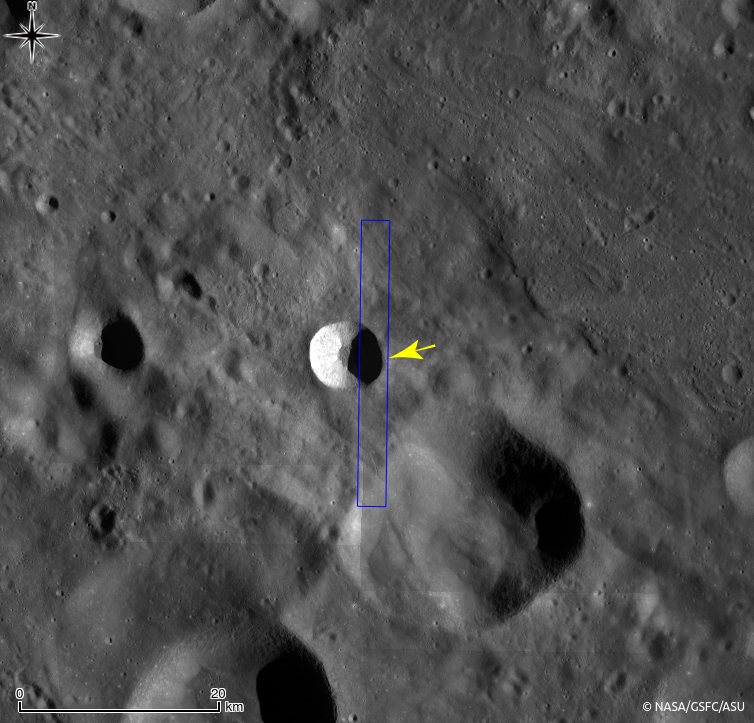
Today's Featured Image highlights the eastern rim of an unnamed young crater (about 6.8 km in diameter), observed in the farside highlands, 218 km southwest from the center of Hertzsprung crater (587 km in diameter). The higher reflectance area (left side of image) is the crater wall inside the crater cavity, and the low reflectance area (right side of image) is the outer surface of the crater, covered by a layer of dark impact melt deposits (see next NAC context view). The low incidence angle (Sun overhead, 7.2° from vertical) enhances the strong reflectance contrast between the fresh anorthosite-rich outcrops on the crater wall and fresh impact melt rocks on the crater exterior. During the cratering process, impact melt was ejected from the crater and placed on the crater exterior, forming a thin layer, or veneer, which solidified into solid rock as it cooled.
As the crater wall collapses with time, the exterior melt veneer is fractured and collapses into the crater, as seen in the center of the opening image. From the very narrow shadows (2-3 pixels) along the boundaries between the melt layer and the crater wall, the thickness of the melt sheet can be roughly estimated to be 9 to 14 m. The thickness of the impact melt deposits near the crater rim crest is controlled by the viscosity of the melt and local slopes. In addition, melt splashing out of the crater with a high ejection velocity may form thinner melt veneer deposits. High resolution NAC images allow us to examine the changes in melt thickness as impact melt flowed away from the crater, telling part of the story of the spectacular moment of this impact cratering event.
Explore the fresh impact melt sheet around this unnamed young crater in full NAC frame yourself!
Related posts:
Published by Hiroyuki Sato on 27 November 2013

